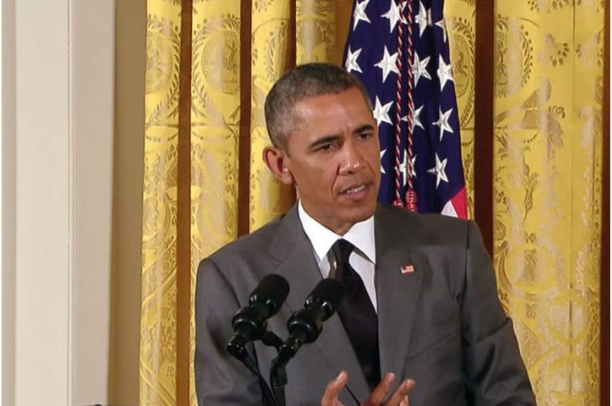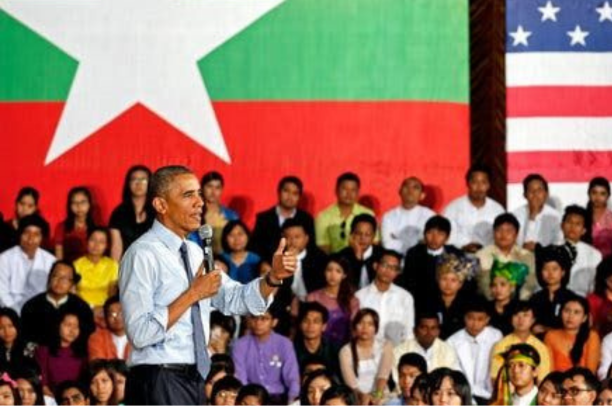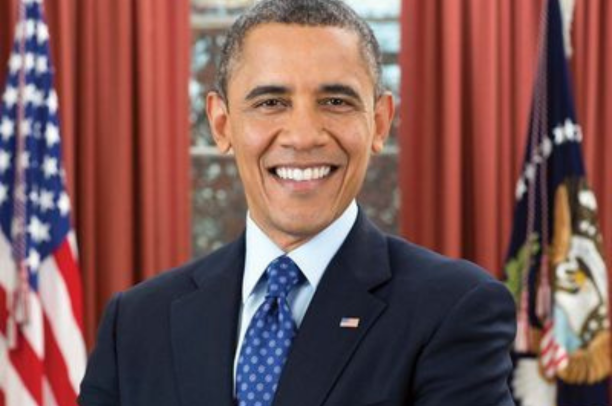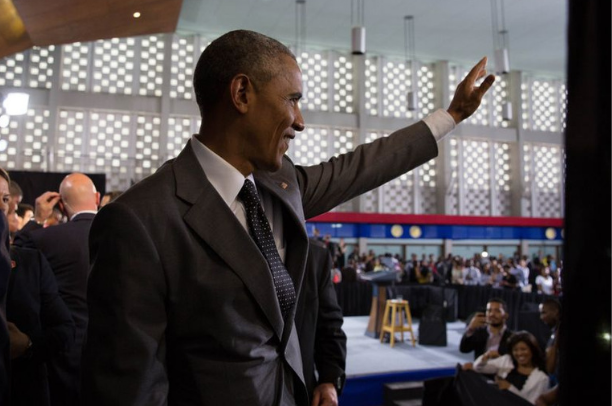Peace Agreement Between the Democratic Republic of the Congo and the Republic of Rwanda
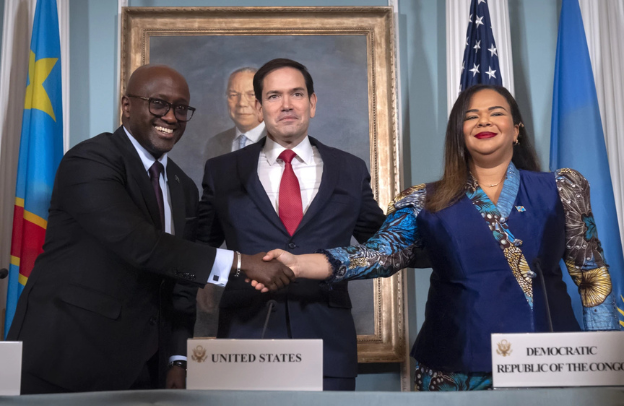
In a pivotal step toward lasting stability in Central Africa, the Democratic Republic of the Congo and the Republic of Rwanda have signed a landmark peace agreement aimed at ending years of regional conflict and fostering renewed diplomatic cooperation.
Learn How to Leverage Your Story through our Story To Asset Framework.
Officially released by the U.S. Department of State and the Bureau of African Affairs on June 27, 2025, this historic accord outlines a shared commitment to regional security, the disarmament of armed groups, and the rebuilding of trust between the two nations with a complex and often tumultuous past.
The full text of the agreement offers critical insight into the path forward for peace, reconciliation, and sustainable development in the Great Lakes region. Enjoy reading.
PREAMBLE
The Government of the Democratic Republic of the Congo (“DRC”) and the Government of the Republic of Rwanda (“Rwanda”) (hereinafter the “Parties”):
REAFFIRMING the mutual commitment to respect the Declaration of Principles signed by the Parties on April 25, 2025, based on mutual respect for sovereignty, territorial integrity, national unity, and the peaceful settlement of disputes;
ACKNOWLEDGING the need for a negotiated, political resolution—rather than a military solution—to the Parties’ disputes;
RECOGNIZING the terms of the Constitutive Act of the African Union, including respect of borders existing on achievement of independence, and its other instruments relating to the promotion of peace and security in Africa and cordial relations among African countries, the UN Charter, and UNSC Resolution 2773 (February 21, 2025) and other relevant UNSC resolutions;
TAKING NOTE OF the Concept of Operations of the Harmonized Plan for the Neutralization of the FDLR and Disengagement of Forces/Lifting of Defensive Measures by Rwanda (CONOPS) of October 31, 2024, arising from the Luanda Process, and of the communiqué from the Second Joint EAC-SADC Summit of Heads of State and Government of March 24, 2025, which was adopted at the 6th Ministerial Meeting between the Democratic Republic of Congo and the Republic of Rwanda on November 25, 2024;
See also 6-Day, Cultural and Nature Immersion into the Heart of Rwanda
MINDFUL of the negotiations underway between DRC and AFC/M23 under the mediation of the State of Qatar in Doha, and the obligation of the Parties to lend full support to bring them to a successful conclusion;
DETERMINED to prevent a renewal of hostilities that may harm the peace process, to actively promote lasting peace, stability, and integrated economic development throughout the region, and to resume normal bilateral relations between the Parties;
COMMITTED to promoting full respect for human rights and for international humanitarian law;
Hereby agree to be bound by the following provisions:
1. TERRITORIAL INTEGRITY AND PROHIBITION OF HOSTILITIES
The Parties agree to the following terms to ensure respect for territorial integrity and the promotion of peaceful relations:
- Respect for the Democratic Republic of the Congo’s Territorial Integrity: Disengagement of Forces/Lifting of Defensive Measures by Rwanda: The Parties agree to implement the Harmonized Plan for the Neutralization of the FDLR and Disengagement of Forces/Lifting of Defensive Measures by Rwanda (CONOPS) of October 31, 2024, as provided for in this Agreement.
- Respect for the Republic of Rwanda’s Territorial Integrity: Neutralization of the FDLR: The Parties agree to implement the Harmonized Plan for the Neutralization of the FDLR and Disengagement of Forces/Lifting of Defensive Measures by Rwanda (CONOPS) of October 31, 2024, as provided for in this Agreement.
- Peaceful Resolution of Disputes: The Parties agree that differences shall be resolved through processes established by this Agreement and other relevant agreements, rather than through hostilities.
- Prohibition of Hostile Acts: The Parties agree to refrain from any acts of aggression. The Parties agree not to engage in, support, or condone any military incursions or other acts, whether direct or indirect, that threaten the peace and security, or that undermine the sovereignty or territorial integrity of the other Party.
- Prohibition of Support for Hostile Acts or Armed Groups: The Parties shall not allow any military or other hostile activities against each other on or from their respective territories or provide support for such activities abroad. To that end, the Parties undertake to work to take any and all measures necessary to ensure that such activities shall not be initiated, planned, carried out, directed, or financed from their respective territories towards each other.
- Territorial Scope: The prohibition of hostile acts applies without geographical restriction, regardless of the location of the armed forces involved.
- Responsibility with Respect to Non-State Armed Groups: The Parties shall take all possible measures to ensure that all armed groups within the conflict area cease engaging in hostilities that are inconsistent with the prohibition of hostilities established in this Agreement.
- Protection of Civilians and Humanitarian Personnel: The Parties shall facilitate the free movement of civilians, including humanitarians. The Parties must comply with international humanitarian law, including in the implementation of this Agreement.
2. DISENGAGEMENT, DISARMAMENT, AND INTEGRATION OF NON-STATE ARMED GROUPS
To promote an enduring end to conflict and to unlock the economic potential of the region, the Parties shall support the ongoing negotiations between the DRC and the AFC/M23 under the mediation of the State of Qatar in Doha and efforts to disarm and demobilize non-state armed groups. This shall include the following:
See also Understanding What Is Behand The Conflict in Congo DRC, M23 and more – Tanignigui Siriki Soro
- Ending State Support to Armed Groups: The Parties shall immediately and unconditionally cease any state support to non-state armed groups except as necessary to facilitate the implementation of this Agreement.
- Disengagement: In a manner sequenced and coordinated with the disengagement of forces, and as provided for in other forthcoming Agreements, the Parties shall support the disengagement, disarmament, and integration of non-state armed groups as provided for by other Agreements or processes and the Disarmament, Demobilization, Community Reintegration and Stabilization Process (P-DDRCS) and the Joint Security Coordination Mechanism as set out in Section 3 of this Agreement.
- Conditional Integration into Security Forces: Any potential reintegration of combatants into the Armed Forces of the Democratic Republic of the Congo (FARDC) and the Congolese National Police (PNC) shall be carried out in a rigorous, individualized, and conditional manner, on a case-by-case basis, based on clear criteria, including moral and physical fitness, in particular, respect for and absence of serious violations of international humanitarian law and loyalty to the State and its institutions.
3. JOINT SECURITY COORDINATION MECHANISM
The Parties shall work together and with regional and international partners to promote stability, security, and development in the region, recognizing that peace and prosperity are interdependent.
The Parties hereby establish and agree to launch within 30 days of this Agreement’s entry into force a joint DRC-Rwanda security coordination mechanism that shall operate solely in accordance with terms decided between the Parties. The Joint Security Mechanism shall establish shared operating procedures and reporting mechanisms to ensure transparency in the scale and scope of operations.
The Joint Security Coordination Mechanism shall be governed by the following principles and the implementation plan set out in the Annex:
- An irreversible and verifiable end to state support for FDLR and associated armed groups, and the total prohibition of all domestic and foreign material and logistical, financial, or other support to the same.
- A commitment to identify, assess, locate, and neutralize in accordance with the relevant provisions of the Harmonized Plan for the Neutralization of the FDLR and Disengagement of Forces/Lifting of Defensive Measures by Rwanda (CONOPS) of October 31, 2024, as established under the Luanda Process.
- A commitment to build on previous successful bilateral security cooperation arrangements, where operations are targeted, punctual, and directed at a specific threat.
- Protection of civilians and respect for international humanitarian law.
4. REFUGEES, INTERNALLY DISPLACED PERSONS, AND HUMANITARIAN CONSIDERATIONS
The Parties shall, with the support of UN agencies, relevant humanitarian organizations, and the international community:
- Return of Refugees: Facilitate the safe, voluntary, and dignified return of refugees, in coordination with territorial and/or customary authorities, of the respective States, to their countries of origin in a manner consistent with their international legal obligations and the provisions of the Tripartite Agreements on the Voluntary Repatriation of Congolese and Rwandan Refugees signed in Kigali, on 17 February 2010, between the DRC, Rwanda, and UNHCR, recognizing the positive contribution of this mechanism.
- Internally Displaced Persons: Recognize that an end to the conflict is necessary to enable the return of IDPs to their place of origin, in coordination with territorial and customary authorities of the Congolese State.
- Humanitarian Assistance: Create enabling conditions for the delivery of emergency relief and guarantee free, safe, unimpeded, and unconditional access by humanitarian agencies to vulnerable populations, consistent with their obligations under international humanitarian law and with relevant UNSC resolutions. The local authorities of the DRC shall be responsible for doing so under the supervision of the DRC central government.
5. MONUSCO AND OTHER MULTILATERAL SUPPORT
The Parties shall support and promote the efforts of multilateral peacekeeping, inter-positional, and verification forces and mechanisms:
- The Parties shall facilitate and support MONUSCO’s capacity to protect civilian populations and implement all elements of its mandate, including by respecting MONUSCO’s freedom of movement and taking all appropriate measures to ensure the safety and security of UN personnel deployed in eastern DRC.
- The Parties commit to advance the implementation of UNSC resolution 2773 (2025) and other relevant UNSC resolutions.
- The Parties recognize MONUSCO, as mandated by UNSC Resolution 2765 (2024), plays an important role in local peace and security.
6. REGIONAL ECONOMIC INTEGRATION FRAMEWORK
The Parties agree to launch within three months of this Agreement’s entry into force the phased regional economic integration framework to be set out in a separate agreement to be titled the “Regional Economic Integration Framework,” that builds on existing efforts, such as the AfCFTA, ICGLR, COMESA, and the EAC.
The Parties shall use this framework to expand foreign trade and investment derived from regional critical mineral supply chains and introduce greater transparency, which shall ensure illicit economic pathways are blocked and both Parties derive greater prosperity—especially for the region’s population—from the region’s natural resources through mutually beneficial partnerships and investment opportunities:
- Bilateral Integration: Under the framework, the Parties shall launch and/or expand cooperation on shared priorities such as national park management; hydropower development; derisking of mineral supply chains; joint management of resources in Lake Kivu; and transparent, formalized end-to-end mineral value chains (from mine to processed metal) that link both countries, in partnership, as appropriate, with the U.S. government and U.S. investors.
- Regional Integration: Additionally, with key partners, the Parties commit to explore options to link the framework to other international or regional economic development initiatives, including in infrastructure projects.
- Economic Oversight: Parties shall establish or utilize independent economic audit and anti-corruption mechanisms to monitor mineral supply chains, infrastructure projects, and any future economic agreements between the Parties, as set out in the Regional Economic Integration Framework.
7. IMPLEMENTATION AND DISPUTE RESOLUTION
- Dispute Resolution: Any dispute arising from the implementation of this Agreement shall be resolved amicably between the Parties with the facilitation of the Joint Oversight Committee upon request of either party. Where the Parties fail to resolve a dispute, the Parties shall refer the matter to the Joint Oversight Committee for facilitation.
- Joint Oversight Committee: For the effective implementation of this Agreement, the Parties hereby establish a Joint Oversight Committee, subject to the following terms:
The Parties shall be members of the JOC and shall invite within three days the following governments and intergovernmental organizations to serve on the Joint Oversight Committee:
African Union FacilitatorQatarUnited States
The Joint Oversight Committee shall have as its mandate the following:
To receive complaints from the Parties about violations of this Agreement and resolve disputes arising from the violations of this Agreement; To take measures, as appropriate, to address violations; Monitor and examine claims of violations and resolve disputes; The Committee may appoint another representative or establish an appropriate ad hoc mechanism to assist in the resolution of any dispute related to this Agreement; The committee shall endeavor to make decisions and resolve disputes by consensus. The JOC shall endeavor to establish its Terms of Reference at the first meeting of the JOC.
- The first meeting of the Joint Oversight Committee shall be as soon as practicable but not later than 45 days from entry into force. The Parties shall explore hosting the first meeting of the Committee in Washington, D.C.
- Clarification: This Agreement does not create obligations on any non-Party states serving on the Joint Oversight Committee.
See also Renate From Brussels to Congo, The Blood Still Cries from the Soil: A journey In Search of the Truth
8. FINAL PROVISIONS
- This Agreement shall remain in force indefinitely, unless otherwise agreed by the Parties.
- This Agreement may be terminated at any time by either Party upon six (6) months’ written notice to the other Party.
- This Agreement may be amended by written agreement of the Parties.
- The Annex shall be considered part of this Agreement.
9. ENTRY INTO FORCE
This Agreement shall enter into force, and the obligations herein take effect, starting from the signature of this Agreement.
Signed at Washington on ___________, 2025, in duplicate, in the English and French languages.
| FOR THE GOVERNMENT OF THE DEMOCRATIC REPUBLIC OF THE CONGO _________________________________ | FOR THE GOVERNMENT OF THE REPUBLIC OF RWANDA _________________________________ |
Witnessed by:
THE GOVERNMENT OF
THE UNITED STATES OF AMERICA
_________________________________
Annex
Agreement on the Operating Procedures of the Joint Security Coordination Mechanism
Expanding on the provisions of the Peace Agreement Between the Democratic Republic of the Congo and the Republic of Rwanda, the Democratic Republic of the Congo (“DRC”) and the Republic of Rwanda (“Rwanda”) hereby further agree to the following regarding the operating procedures of the Joint Security Coordination Mechanism (“JSCM”):
Incorporation and Reference to the CONOPS
- The Parties reaffirm their commitment to the terms and obligations of the Concept of Operations of the Harmonized Plan for the Neutralization of the FDLR and Disengagement of Forces/Lifting of Defensive Measures by Rwanda of October 31, 2024 (“CONOPS”), and hereby incorporate the CONOPS, except as otherwise provided for in this Agreement and its Annexes.
- In the event of a conflict between this Agreement and the CONOPS, this Agreement and its Annexes shall prevail.
Composition of the JSCM
- The JSCM shall be composed of a minimum of three (3) permanent representatives of each Party, to include military, intelligence, and foreign ministry representatives.
- The Parties shall select and announce their permanent representatives immediately upon signing the Agreement.
- In the event of a conflict between this Agreement and the CONOPS, this Agreement and its Annexes shall prevail.
Mission and Capabilities of the JSCM
The Parties agree that the mission of the JSCM is to identify, assess, and locate the FDLR and affiliated groups in order to allow for the neutralization of the FDLR and affiliated groups.
To further this mission, the Parties agree that the JSCM is empowered to:
Monitor and assess the implementation of the CONOPS and relevant provisions of this Agreement;
Conduct intelligence and information exchanges between the Parties for purposes of implementing this agreement and the CONOPS;
Identify and define the status and membership of the FDLR and affiliated groups;
Establish and monitor the locations of FDLR and affiliated groups;
Verify all information, data, and activities relating to the FDLR and affiliated groups;
Coordinate with international actors in furtherance of its mission;
Assess the nature of the threat of the FDLR and affiliated groups and determine appropriate actions to neutralize;
Coordinate on other steps to neutralize the FDLR and affiliated groups in accordance with the CONOPS.
The JSCM shall determine the geographic scope of its activities, based on conditions on the ground and with full respect to territorial integrity and sovereignty.
- The Parties also agree to leverage the JSCM to communicate on and ensure compliance of any coordinated movements or repositioning of militaries or other armed groups.
Meeting and Coordination Procedures
The JSCM shall meet on a monthly basis. Immediately upon signing, the Parties shall agree on the date and location of the first meeting.
The monthly meeting location shall then alternate monthly between venues in the DRC and in Rwanda, and the host country of each meeting shall be responsible for all logistical, administrative, financial, and security arrangements for each meeting.
The permanent members of the JSCM shall attend each meeting.
The Parties shall designate one of their permanent members of the JSCM to be the primary point of contact to facilitate coordination for planning meetings and other activities.
At its first meeting, the JSCM shall adopt a Terms of Reference to further govern its operating procedures.
Reporting Requirements
The JSCM shall draft and adopt a single, joint report after each monthly meeting.
The JSCM shall submit the report to their respective military, intelligence, and ministries, at the ministerial level.
Third Party Participation
The Parties agree to invite the United Statesand Qatar, as represented by the relevant Defense attaché and/or other representative, to attend the JSCM meetings as an observer.
The JSCM may invite other third-party states or organizations to participate in the JSCM, and the JSCM may jointly solicit additional financial, logistical, and technical support from external third-party states or organizations.
Duration of the JSCM
The JSCM shall continue to operate until the completion of its mandate, as provided for in this Agreement and in accordance with the CONOPS, or as otherwise expressly agreed by the Parties.
Appendix A
CONCEPT OF OPERATIONS
FOR THE HARMONIZED PLAN FOR NEUTRALIZATION OF THE FDLR AND
DISENGAGEMENT OF FORCES/LIFTING OF
DEFENSIVE MEASURES OF RWANDA
Reference:
Ministerial Meeting held in Luanda on October 12, 2024
Activities and responsibilities defined at the meetings of experts in Luanda on August 7-8, in Goma on August 19, and in Rubavu on August 29-30.
1. Context
1.1. Relations have been strained between the DRC and Rwanda for nearly three decades, leading to mutual accusations following the actions taken by armed groups in eastern DRC.
1.2. The African Union appointed the President of the Republic of Angola, His Excellency Joäo Manuel Gonçalves Lourenço, the AU Champion for Peace and Reconciliation in Africa, to facilitate dialogue between the DRC and Rwanda and play an important role in deescalating tensions in eastern DRC.
1.3. A series of ministerial meetings was held between the foreign ministers of the DRC and Rwanda in Luanda beginning on March 21, 2024, and were facilitated by their Angolan counterpart. The fifth and final meeting was held on October 12, 2024, to examine the harmonized plan for the neutralization of the FDLR and the disengagement of forces, and the review of Rwanda’s defensive measures adopted by the three countries intelligence experts in Rubavu on August 29 and 30, 2024.
1.4. On October 12, 2024, the fifth ministerial meeting on security and peace in eastern DRC was held in Luanda, Angola and addressed the following:
— Respect for the ceasefire of August 4, 2024;
— The harmonized plan for the neutralization of FDLR and the disengagement of forces, and the review of Rwanda’s defensive measures (Harmonized Plan);
1.5. The meeting held on October 12, 2024 tasked the facilitators with preparing a Concept of Operations (CONOPS) for neutralization of the FDLR and a review of Rwanda’s defensive measures, while taking into account concerns raised by all parties. Intelligence experts were to examine the CONOPS at their meeting on October 30-31, 2024, prior to a further Ministerial Meeting to consider the experts’ report on the CONOPS.
1.6. The proposed plan describes a sequence of activities to be undertaken, respectively, by the FARDC and the RDF, for the neutralization of the FDLR and the review of Rwanda’s defensive measures. It emphasizes close coordination between the FARDC and the RDF, with support from the Angola-led Ad Hoc Verification Mechanism, to complete the mission.
2. Political Objectives
2.1. Re-establish a climate of trust between the DRC and Rwanda through the neutralization of the FDLR by the DRC and the disengagement of forces/removal of defensive measures by Rwanda;
2.2. Create a safe and secure environment that promotes the renewal of socioeconomic activities;
2.3. Ensure lasting peace and stability in the region as well as respect for human rights;
2.4. Ensure protection of all citizens in both countries;
2.5. End hate speech and verbal attacks;
3. Strategic Objectives
— Defeat the FDLR armed group and its supporters;
— Protect the local population and infrastructures;
— Ensure the return of displaced people to their places of origin;
— Maintain control of natural-resource use sites;
4. Desired Strategic Military Outcomes
— De-escalation of armed conflicts in eastern DRC;
— Safe areas and population centers;
— Safe populations;
— Free circulation of people and goods;
— Lowered tension between the DRC and Rwanda;
5. Desired Final End State
— The threat of the FDLR in the DRC is eradicated;
— Rwanda’s defense measures are lifted;
— The State’s authority is reestablished;
— Trust between the DRC and Rwanda is reestablished;
— Congolese refugees are repatriated and resettled in the DRC, and Rwandan refugees are repatriated and resettled in Rwanda;
— Peace, stability, and development are reestablished in eastern DRC, and the two countries become good neighbors again;
6. Preconditions for Success
— Intelligence management;
— Improved coordination between the different forces in the Ops theater;
— Close collaboration between different stakeholders in the Ops theater;
— Support from the regional and international communities;
— Effective influence operations;
— Raising awareness among the population about disassociating from the FDLR;
7. Mission
The DRC:
— Neutralize the FDLR;
— Promote the repatriation of FDLR members to Rwanda;
— Guarantee the conditions for lasting peace and stability in the Great Lakes subregion;
— Protect the population and ensure the return of displaced persons to their places of origin;
Rwanda:
— Disengage forces/ lift the defense measures put in place by Rwanda;
— Ensure the social reintegration of demobilized FDLR ex-combatants repatriated to Rwanda;
IMPLEMENATION OF CONOPS
8. Concept of Operations (CONOPS):
a. Intention: Neutralize the FDLR and lift Rwanda’s defensive measures.
b. Operating Plan: The FARDC must neutralize the FDLR while the RDF disengages forces/ lifts Rwanda’s defensive measures in four phases:
(1) Phase 1: Preparation
(a) Analysis of the level of threat posed by the FDLR;
(b) Briefing on the progress of activities;
(c) Locating the FDLR and their equipment;
(d) Raising awareness in local communities;
(e) Locating and sharing information about the FDLR and its splinter groups;
(f) Sharing information on defense measures put in place by Rwanda.
(g) Cessation of sporadic cross-border operations by Rwanda
(2) Phase 2: Conduct of operations
(a) Neutralization of the FDLR and its splinter groups: Taking targeted actions against the FDLR and jointly evaluating implementation of the plan to neutralize the FDLR;
(b) Lifting of Rwanda’s defensive measures and halting sporadic cross-border operations;
(c) Jointly evaluating implementation of the plan for disengagement and the lifting of Rwanda’s defensive measures;
(3) Phase 3: Evaluation
(a) Joint evaluation by the DRC and Rwanda of the plan for having the RCD and its partners neutralize the FDLR;
(b) Joint evaluation by the DRC and Rwanda of activities related to lifting the defensive measures taken by Rwanda;
(4) Stabilization
(a) Demobilization, repatriation, and reintegration of FDLR ex-combatants;
(b) Strengthening trust and a peaceful environment between the DRC and Rwanda;
(c) Normalizing bilateral relations between the DRC and Rwanda;
9. Timeline: Operations carried out in several phases as follows:
a. Phase 1: Preparation of activities (awareness-raising, planning, coordination, and exchange of information with different partners): D+7 to D+15;
b. Phase 2: Conduct of operations (efforts to neutralize the FDLR and lift Rwanda’s defensive measures): D+20 to D+30;
c. Phase 3: Evaluation of Rwanda’s and the DRC’s activities on D+90
d. Phase 4: Stabilization/Harmonization on D+120
10. The neutralization of the FDLR and the lifting of Rwanda’s defensive measures must be completed within three months to comply with the harmonized plan for the neutralization of the FDLR and disengagement of forces/lifting of defensive measures of Rwanda adopted by military and intelligence experts in Rubavu on August 30, 2024.
11. The Ad Hoc Verification Mechanism will ensure the above activities are monitored.
12. Key deadlines are as follows:
12.1.1.1. Completion of neutralization of the FDLR and lifting of Rwanda’s defensive measures: NO LATER THAN D+90
12.1.1.2. Duration of activities: 3 months
LOGISTICAL SUPPORT
13. The countries will be responsible for providing logistical support, including:
a. Financing:
(1) Each country finances it owns activities;
(2) Sustainable funding must be ensured internally.
b. Medical: Each country is individually responsible.
Risks and Constraints
Stigmatization of certain communities (mitigation measures: campaign to promote national cohesion, zero tolerance for all stigmatization);
Regionalization of the conflict (mitigation measure: active diplomatic efforts);
FDLR retaliation against the population (mitigation measure: organize popular resistance among the population);
Lack of mutual political will and trust between Rwanda and the DRC.
Appendix B
List of Acronyms
AFC – Congo River Alliance
AU – African Union
AfCFTA – African Continental Free Trade Area
CONOPS – Concept of Operations of the Harmonized Plan for the Neutralization of the FDLR and Disengagement of Forces/Lifting of Defensive Measures by Rwanda of October 31, 2024
COMESA – Common Market for Eastern and Southern Africa
DRC – Democratic Republic of Congo
EAC – East African Community
FARDC – Armed Forces of the Democratic Republic of the Congo
FDLR – Democratic Forces for the Liberation of Rwanda
ICGLR – International Conference on the Great Lakes Region
IDPs – Internally Displaced Persons
M23 – March 23 Movement
MONUSCO – United Nations Stabilization Mission in the Democratic Republic of the Congo
P-DDRCS – Disarmament, Demobilization, Community Reintegration and Stabilization Process
PNC – Congolese National Police
SADC – Southern African Development Community
UN – United Nations
UNHCR – United Nations High Commissioner for Refugees
UNSC – United Nations Security Council.
Learn How to Leverage Your Story through our Story To Asset Framework.

